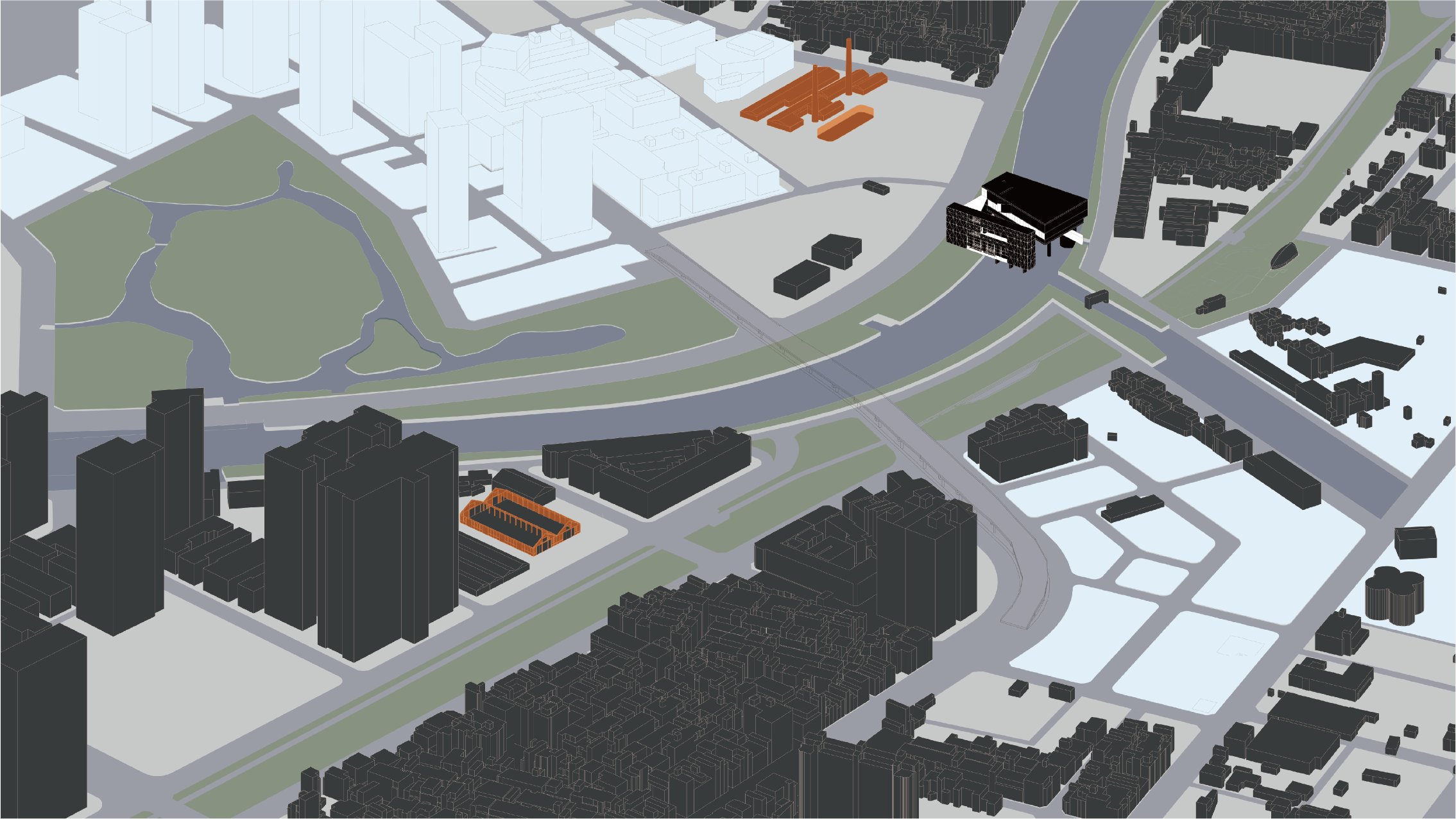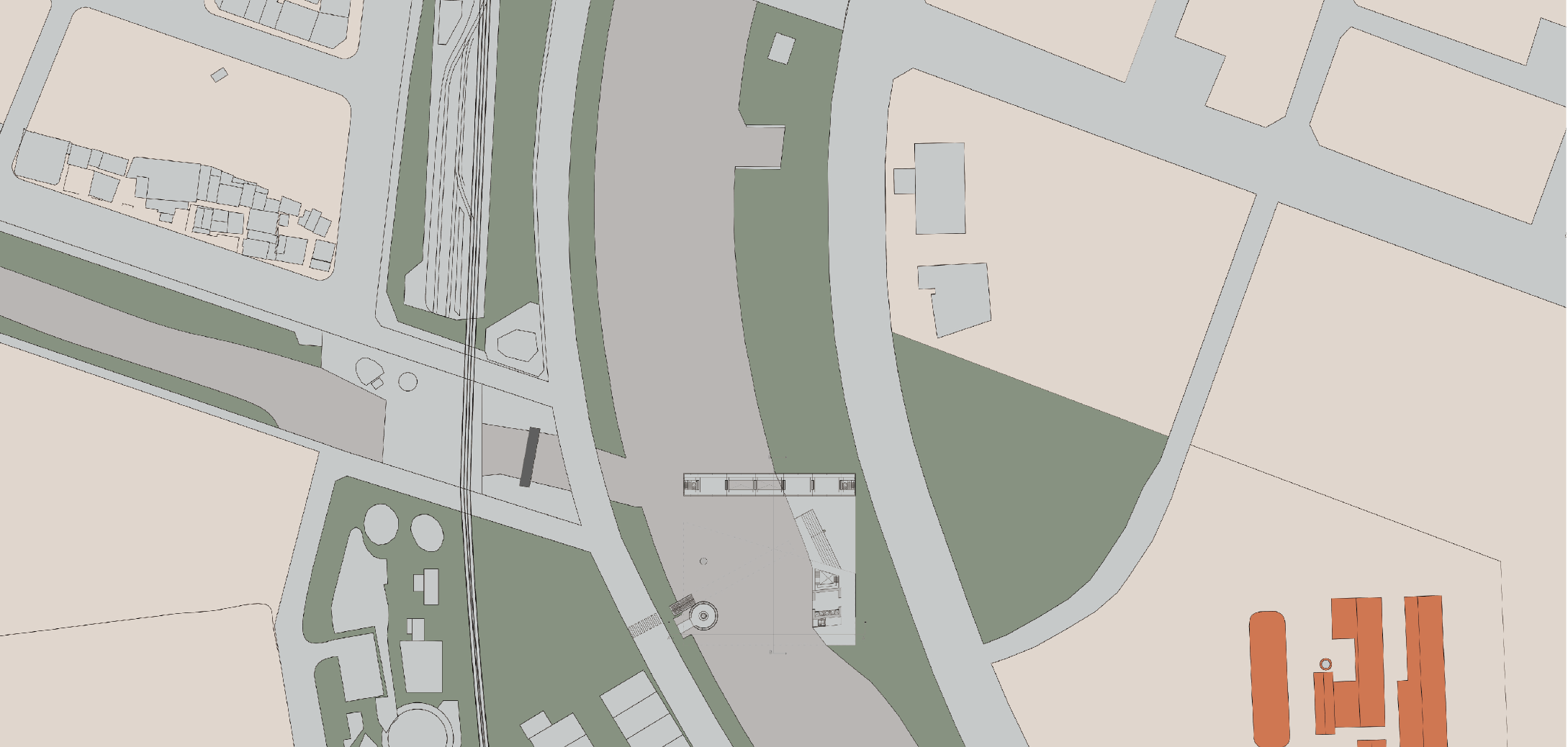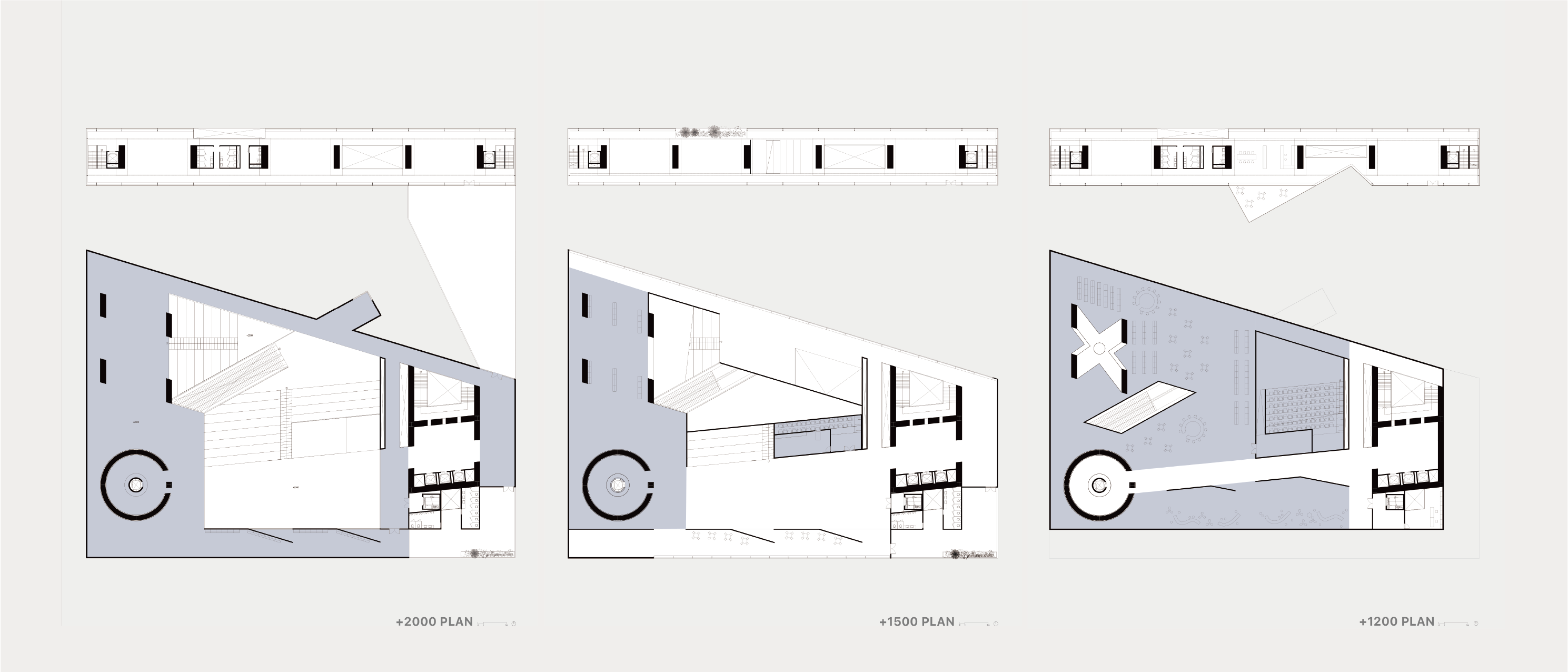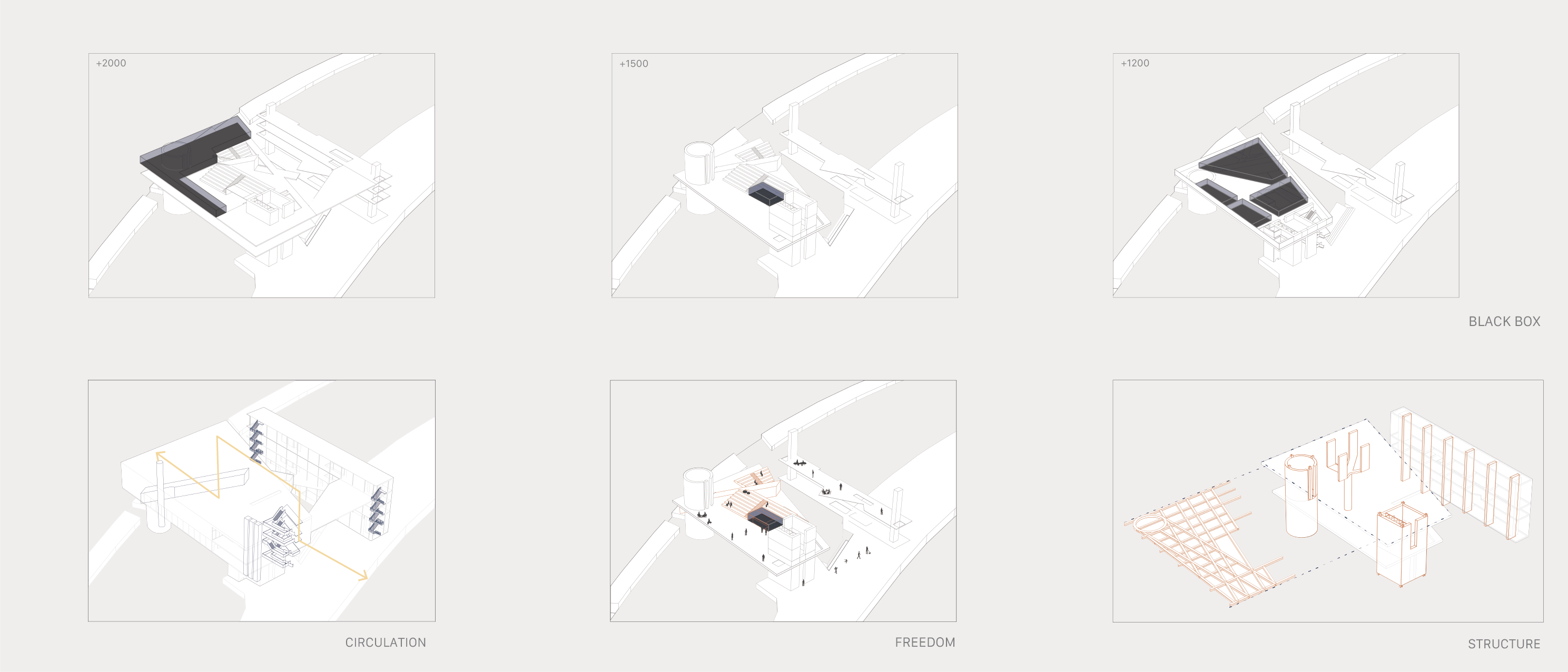空 ・集合
Freedom ・ Set
陳若欣


試圖以「空」再定義城市
設計說明
都市中的空從來都不應該是被剩下的,重新製造屬於高雄的「空」的關係
基地
高雄市鼓山中都重劃區
從輕軌開始,對於城市的認知從慢展開,意識到屬於高雄的界線、空、巨大。
隨著高雄從日治時期的開發這些因為高雄曾經工業城市發展,出現的建設,愛河、鐵路、陸橋 在高雄形成了一條條界線,而整個高雄就像是被劃分成一座座小島在各自發展。現在因為工業城市的轉型鐵路地下化了,實體的邊界從無到有又再度從有化無。然而我認為我對於這條邊界的感知卻從未消失,並且強化了巨大和空。
基地位在愛河上是鐵路地下化出現的綠廊道和愛河最接近的區域,同時面對九如陸橋的拆除,中都重劃區的開發、台泥水泥廠拆除形成了柴山滯洪池…種種面對工業城市轉型,將部分物件去拆除,讓這些區域重新以一種不被定義的空狀態去存在在都市,因此想藉由一個跨越愛河的設計開始定義這些區域,串連起周圍的關係,讓空不再被剩下,而是能被發現。
Site
Gushan, Kaohsiung City
From the beginning of the light rail, the perception of the city started slowly, becoming aware of the boundaries, emptiness, and enormity that belong to Kaohsiung.
With Kaohsiung’s development since the Japanese colonial period, constructions such as the Love River, railways, and overpasses emerged due to its industrialization. These structures formed delineations within Kaohsiung, resembling islands in a sea, each evolving independently. Now, with the industrial city transitioning, the undergrounding of railways has erased physical boundaries, turning existence into nonexistence once again.
However, my perception of these boundaries has never disappeared; instead, it has accentuated the enormity and emptiness. Boundaries persist, albeit in a state of emptiness.
Spaces within the urban fabric should never be disregarded. By redefining the concept of “emptiness,” we can reconsider what defines the urban condition of Kaohsiung.





